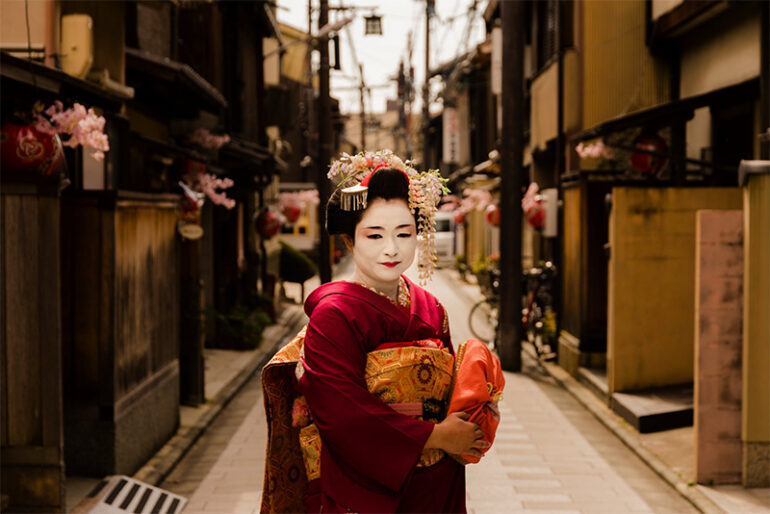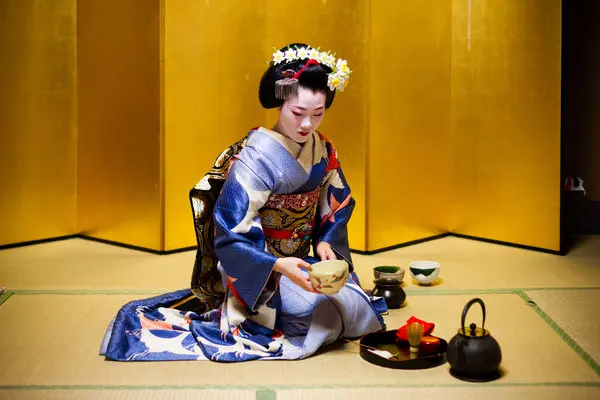The geisha are professional Japanese women whose customary line of work is entertaining male clientele, usually during occasions where business people get together in teahouses and other dining establishments. The word “geisha” in Japanese translates to “artist,” being that these women are fully-rounded entertainers who display multiple talents, from singing and dancing to playing a musical instrument. The “samisen” is similar to the lute, and geishas undergo training to play it and perform for their male clients. Geishas are well-versed in various topics to hold conversations with their clients. They are also proficient in calligraphy, perform traditional tea ceremonies, and are experts in the art of “kabo” or “ikebana,” the Japanese style of flower arrangement. They dress beautifully in their kimonos, are entirely made up according to the geisha style, and are refined in their manner of talking and moving.
The history of geisha dates back several centuries ago. Kyoto was once the capital of Japan and was well-known among pilgrims as a favorite destination. During the 17th century, the geishas were men who provided entertainment for these pilgrims through song and dance. Soon after, the male geishas were replaced by women who were part of the staff in tea houses scattered along the way to the temples. As it was in centuries past, geisha is a profession that only Japanese women hold today.
How geishas are trained
Geishas start their training when they are very young. They are taught how to dance, play musical instruments, and perform tea ceremonies. Others are also trained to sing, learn calligraphy and the art of arranging flowers. “Shikomi” is the first training stage where the young Japanese girls are taught to follow orders such as household chores. They also go to geisha school and learn about geisha arts, ending with a dance for their final exam. This stage is followed by “Minarai,” where they are allowed to attend banquets without formally participating in them. Instead, they are there to observe their older sister or “onee-san,” and gain knowledge from the older geisha’s experience. After about a month, they move on to the “Maiko” stage, the geisha apprentice, following their geisha mentors. They are present in their mentor’s engagements and learn more about tea service, conversing with clients, and performing dances. Should a geisha decide to get married, she must leave her geisha profession. For those who remain single and retire, training young geishas, teaching dance and singing, or managing a dining establishment are standard options.
The geisha of modern times
In the past, it was challenging for first-timers to meet a geisha personally as one would need a personal reference to be introduced to one. Presently, interested individuals can meet a geisha online open up what once was an almost underground culture reserved for wealthy business people. A private meeting with a geisha online lasts for about 45 minutes to watch a geisha perform and even ask questions about their professional life.
The presence of geishas during business meetings and special events lend a festive atmosphere, with their wealthy clients enjoying their company, artistry, and the unique entertainment they provide.
Photo Attribution:
1st and featured image from https://www.pexels.com/photo/woman-wearing-red-kimono-2918492/
2nd image from https://www.nytimes.com/2015/05/07/business/traditional-geishas-entertain-western-guests.html

